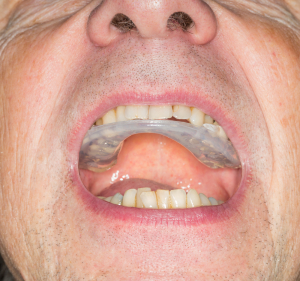Introduction
Clenching or grinding of teeth is medically called “bruxism”. It leads to grinding down of the enamel of the crowns of the opposing teeth. Often grinding of teeth is done while the person is asleep at night. If left alone, there can be micro cracks in the enamel and cavities that can cause infection of the pulp and lead to tooth loss. The support tissues in the periodontal area can also be damaged leading to loose teeth. Tense people who may have obsessive compulsive disorders, anxiety disorders and other psychological or psychiatric problems would be at a higher risk of developing bruxism.
Symptoms
The person affected by bruxism may experience hypersensitive teeth, which comes from the repeated pressure transmitted to the bottom of the teeth where the nerve roots branch off the larger nerves. For a similar reason the overactivity of the jaw muscles makes them hurt as they do not get enough relaxation. This can lead to tension type headaches. The constant grinding will eventually lead to wearing of the teeth on its surfaces, but can also damage teeth, dental restorations like crowns or fillings and lead to or breakage of teeth (tooth fractures).
Treatment
Bruxism is treated by concentrating on not grinding the teeth during waking hours. This will spill over to a certain extent into the nighttime hours. If not, a bruxism guard at night may have to be worn, which is available over the counter in drug stores and some sporting goods stores. The dentist can also fit you with a personalized mouth guard for the nighttime. Occasionally anxiolytics can be prescribed for a short period of time, but on the long term this is not acceptable as they are addicting.
References:
1. Suzanne Somers: “Breakthrough” Eight Steps to Wellness – Life-altering Secrets from Today’s Cutting-edge Doctors”, Crown Publishers, 2008
2. http://www.webmd.com/oral-health/dental-root-canals
3. http://www.aacd.com/whitening
4. http://www.nhs.uk/conditions/Gum-disease/Pages/Introduction.aspx
5. http://www.aae.org/patients/treatments-and-procedures/root-canals/root-canals.aspx
6. http://en.wikipedia.org/wiki/Dental_trauma
7. http://www.dailymail.co.uk/health/article-25286/The-complete-guide-cosmetic-dentistry.html







